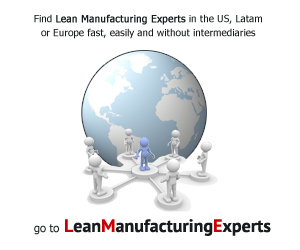Lean Manufacturing, Lean Design and profitability
Over recent years the concept of Lean Manufacturing has received extensive exposure as a way to conserve resources, reduce waste, and improve profitability.
There is no doubt that many manufacturers have benefitted in varying degree from implementing Lean Manufacturing processes in their operations, but are the full benefits of a Lean approach being missed because of the lack of a strong focus on Lean Design?
In the current challenging economic conditions it is more important than ever that enterprises identify opportunities and develop innovative avenues to productivity improvement in order to achieve a competitive edge, ongoing growth and improved profitability.
Managing Director of Lean Design Australia, Gary Stewart (pictured), has extensive experience working as a consultant on Lean Design projects with a broad range of companies, both in Australia and overseas.
According to Stewart, Lean Manufacturing does not work effectively without Lean Design.
“There are significant benefits in taking a Toyota style Lean Design approach over a Lean Manufacturing approach. A single properly conducted Lean Design effort will deliver far more cost reduction, far more quality improvement and far greater profitability in far less time than any 30 Lean Manufacturing efforts,” Stewart said.
“The key is to focus on setting cost, time and quality targets as hurdles that must be achieved by the design for every product you make – long before you work out how to make it.
“Even if you are only a ‘make to drawing’ manufacturer, you can benefit from Lean Design because it will identify very early on all of the cost, quality, time, and manufacturability problems inherent in that design before you start cutting steel and trying to Lean Manufacture it.
“All cost overruns, missed deadlines, and failed product developments are symptoms, not root causes. Unless the root causes are addressed, no amount of additional oversight, extra regulation, rearranging of organisational boxes, creation of new offices, or changes to production or processes will help make better products. In fact they usually make things worse.”
Build human capability
Stewart believes that the true secret of the Toyota approach is its human-based ‘Right First Time’ thinking across the whole business, rather than Lean Manufacturing.
“The primary purpose of the factory is not to build cars – it is to build human capability, and the product is inconsequential. Lean Design is about changing the way your people think and thus changing the way they work.
“A primary purpose of Lean Design is learning to see how to make things much better, and the primary purpose of manufacturing should be to build the knowledge and capability of your human being, not products.
“It’s not about Lean Design as a process – it’s about what your people can do for your customer using Lean Design.
“A key to successful Lean Design is to establish an Integrated Project Team (IPT) where the program management system is built into the design. People should be used to create the future, and IPTs are the way to the future.
“There is a need to look at the root cause of costs and this must be done before CAD drawings are done because after that it’s too late. Hurdles and targets must be met before proceeding, as at the CAD stage up to 90 percent of cost, quality, manufacturability, and time are all locked in.
“If the time is spent up front to get it right fewer problems will be experienced during production. Time lines can be very dramatically reduced if time is spent up front to take time out of the back end.
“Lean Design can enable you to take 30-60 percent of cost out of your products and 20-40 percent of time out of your designs and production operations, while delivering up to 30 percent lower cost of ownership to your customers.”
Stewart points to some outstanding examples of where Lean Design has been successfully applied, including in a defence industry Joint Light Tactical Vehicle project in the US.
“This project involved on-board vehicle power consolidation and resulted in a 63 percent reduction in cost, 45 percent reduction in size, 66 percent fewer parts, and 76 percent fewer sub-assemblies. In addition, there was a 69 percent reduction in assembly steps, 71 percent improvement in quality cost, and 50 percent less wiring harnesses,” he said.
“Another successful but less sophisticated Lean Design project was undertaken at Kodak where the design of a projector door assembly was subjected to a critical review. Prior to commencement of the project, the door assembly consisted of 5 parts at an assembly cost of $2.50 which was reduced to 2 parts at a cost of $1.00.
“The outcome was that the door carried out the same function but the number of parts was reduced by 60 percent, cost was down by 60 percent, quality improved by around 90 percent, and production time was reduced by some 85 percent.
“The follow-on effect on manufacturing was that the number of processing steps was reduced by 90 percent, there was an 80 percent reduction in operators, and the cost of parts storage was eliminated.
“Design creates 70-90 percent of your cost structure and problems, but through the application of Lean Design, a change of thinking can be developed to transform a business, create a new level of human capability, and a new level of product design and development.
“Without doubt, Lean Design can enable companies to produce products that are far more affordable, far more functional, far higher in quality, and far more manufacturable.”

 News, training, experts opinion, bibliography, software and everything about Lean world.
News, training, experts opinion, bibliography, software and everything about Lean world.
